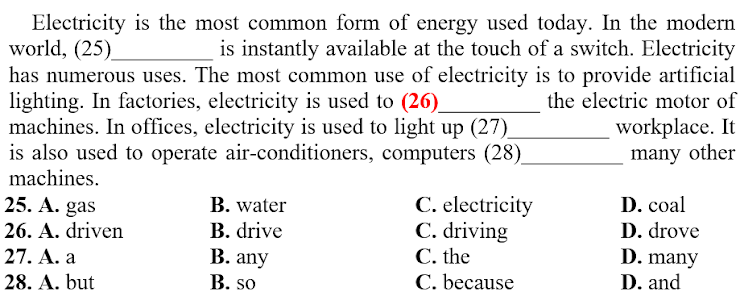Read the following passage and mark the letter A, B, C, or D on your answer sheet to indicate the correct word or phrase that bestfits each of the numbered blanks from 26 to 30.
In summary, for most visitors, the Japanese are (26) .................. and difficult to understand. The graceful act of (27) .................. , is the traditional greeting. However, they have also adopted the western custom of shaking hands, but with a light grip. Meanwhile, to show respect for their customs, it would flatter them to offer a slight bow when being introduced. Avoid hugging and kissing when greeting. It is considered rude to stare. Prolonged direct eye contact is considered to be (28) .................. or even intimidating. It is rude to stand with your hand or hands in your pockets, especially when greeting someone or when addressing a group of people. The seemingly simple act of exchanging business cards is more complex in Japan (29) .................. the business card represents not only one's identity but also his status in life. Yours should be printed in your own language and in Japanese. The Japanese are not a touch-oriented society; so avoid open displays of affection, touching or any prolonged form of body contact. Queues are generally respected; especially in crowded train and subway stations (30) .................. the huge volume of people causes touching and pushing.
Điền vào ô 26
A. complex
B. easy
C. simply
D. cheap


Đáp án A
A. complex (a) phức tạp, rắc rối
B. easy (a) dễ dàng
C. simply (a) đơn giản
D. cheap (a) rẻ
In summary, for most visitors, the Japanese are (26) _________ and difficult to understand.
(Nói tóm lại, đối với hầu hết các du khách thì người Nhật Bản khá phức tạp và khó hiểu.)